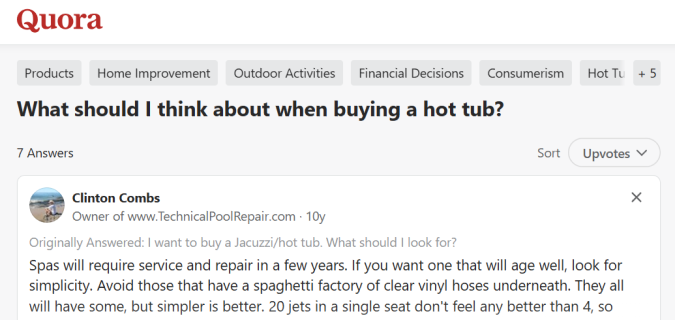We all have those moments where we just can’t pass up an opportunity. It’s everything we want at the price we want. It’s presented to us in the best way. But it’s only available for 5 hours and then it’s gone. So, what do we do?
Buy it, of course.
That’s the result you want from Fear of Missing Out (FOMO) marketing. FOMO marketing uses psychology to tap into people’s emotional responses and triggers to make them act fast so they don’t miss out on an opportunity.
The messaging used in FOMO marketing is framed in a way that pushes people to make an impulse purchase decision rather than dealing with the regret of not taking action.
It can be one of the most effective kinds of marketing. But not if you’re doing what most people are doing with FOMO marketing.

FOMO Mistake #1: Relying on “Limited Time Offer”
People make impulsive buying decisions under the pressure of a ticking clock all of the time. So, slapping “limited-time offer” on more deals and marketing materials should be enough to get people to act now, right?
Not so much. Overusing limited-time offers is the enemy in FOMO marketing, yet so many companies do it. People eventually catch on to there being a new limited-time offer every day or week and will be more inclined to wait around for the next one then act on the current one.
What to Do Instead: Stagger Limited Time Offers
Space limited time offers out. One a month is okay. Once a quarter creates a bigger sense of urgency.
Start telling customers about your upcoming limited-time offer a few weeks before it’s set to come out. Put a countdown clock on your website’s homepage with a simple, bold graphic of the product or service, 1-2 lines that describe it, and when customers can get it.
Also, consider doing a pre-sale signup. Customers can pay for the new product ahead of time to guarantee receiving it. But only for a few days or a week in the month leading up to its launch. This will prompt a lot of people to take action because they don’t want to be that person on launch day who misses out because the product sold out instantly.
In your marketing content, reveal details about the offer on a timeline. For example, instead of revealing everything about the product on day 1 of your marketing campaign, do a 10-second product video without any audio to introduce the product. Let that sit with people for a few days.
Then, launch a string of videos over the next 5 days that grow in length and show people using the product, developers talking about it, what the offer is, etc. Customers will get more and more excited about the offer that’s coming and not want to miss it.
FOMO Mistake #2: Incorporating Influencer Marketing into FOMO Marketing
Companies dream of getting a nod from Kim Kardashian or The Rock reviewing and vouching for their products. The hope is that seeing their favorite celebrity or high-level influencer using a product will make your customers say “I have to try this now!”
Many people writing on FOMO marketing say that quotes and evidence that celebrities or influencers have taken advantage of an offer or product will speak to a person’s longing to be on the same level as someone so highly regarded in society.
But I completely disagree. Most people know that influencers are bought and paid for. So, they don’t really trust anything they’re saying and tend to stray away from their recommendations.
What To Do Instead: Let Real Customers Speak on Their Experiences
Don’t blend influencer marketing with FOMO marketing. If your products or services are amazing and they go quickly, let your real customers tell that story. People who had such a great experience that they’re willing to talk about it without getting anything in return.
Use user-generated content to enhance FOMO marketing. You can’t log onto a social media platform today without seeing a video about how happy someone is that a popular product is back in stock and why others better hop on the deal as soon as possible.

These kinds of short-form videos do the marketing work for you. The more they’re shared on social media, the further your reach.
Encourage customers to create such videos and offer something small but valuable in return for their permission to use it, like a discount on their next purchase. Have a dedicated email address or page on your website for people to send their UGC to. You can also tell people to tag you in their videos and then you can directly message them for permission to use it.
FOMO Mistake #3: Thinking “Don’t Miss Out!” Is Top-Tier FOMO Marketing Copy
A lot of companies will talk about a product or offer in their ad, including “Don’t miss out!” at the end of it, and that’s the extent of their FOMO marketing. Little do they know, this phrase does nothing for FOMO.
Just because you say “don’t miss this” doesn’t mean people will take it seriously enough to go check it out.
What To Do Instead: Be Specific and Communicate True Value in Your FOMO Marketing Copy
“Don’t miss out,” “limited time offer,” “while supplies last,” “it won’t be here for long,” copy like this doesn’t bring up any real emotion in a person that compels them to act fast.
Specificity and true value will. Here are some examples:

- “Our last limited-edition product sold out in 3 minutes…”
- “Remember, limited edition products never come back…”
- “We’re taking [This] away, be one of the last to get it…”
- “Only 125 people in the world will be a part of this group…”
- “Our membership only opens twice a year, so sign up now or you’ll have to wait another six months.”
- “These slots never last for more than a day…”
- “Your favorite workshop host is retiring…here’s how to get tickets to the last workshop they’ll ever host.”
Mistake #4: Thinking Short-Term Only
Most companies play the short game when it comes to FOMO marketing. They’ve got these limited-time offers that pop up once a month. They have daily flash deals. They’re talking about how something new is coming every day.
What these companies don’t do is think about FOMO in a long-term sense. Let’s look at singer Rihanna as an example.

Many people think her 8-year hiatus in music was done purposely. It’s created this ongoing anticipation for when she’s going to drop her next album and tour again. Now that people know she’s capable of going away from music for a long time, the next time she puts out an album or announces a tour, downloads will explode and tickets will sell out faster than Beyonce’s.
Ultimately, people won’t want to miss out on her music the next time she drops it.
What To Do Instead: Create a Long-Term FOMO Marketing Strategy
You don’t have to be this extreme. However, it’s worth creating a long-term FOMO marketing strategy. Host a big pop-up shop every couple of years. Add a new influencer to your team once a year and host an exclusive event around it. Have a huge annual sale.
Whatever it is, it should be so good and so rare that people will put it as a recurring event in their calendars so that they don’t miss it.
FOMO Mistake #5: Bringing Offers or Products Back
Companies will try to prompt customers to act fast by marketing something with a time or quantity limit. Next thing you know, the products that only had a few left are back in stock, or the exact same limited time offer surfaces again a few weeks later.
What To Do Instead: Don’t Bring Certain Offers And/Or Products Back
If you really want to tap into someone’s FOMO, stop bringing certain offers or products back. If customers know there won’t ever be another one like it, they’ll be more likely to purchase it fast.
Put out a limited edition product once a year and never bring it back. You’ll build a reputation of releasing really good exclusive products. And as time goes on, more people will make sure they don’t miss your limited edition releases.
The McRib is a great example of this. The classic sandwich was axed from the McDonald’s menu in 2012. They brought it back for a short time in 2021 to celebrate its 40th anniversary, and it’s been gone since.

The chances of them bringing it back are slim, maybe for another anniversary or special event. But it makes you want to get one the next time around because you may not have the chance again in your lifetime.
When it comes to limited-time or special offers, rotate products or services for them. For example, if your limited-time offer is 50% off a product for a certain time every quarter, don’t do the same product every quarter. Make it feel like they may not ever see that product on sale like this again because the same product doesn’t go on sale twice in any given year.
Everything You SHOULD Do in FOMO Marketing
Don’t make the mistakes most do with FOMO marketing. Execute these actions instead for it to be successful:
- Create a long-term FOMO marketing strategy.
- Stop bringing certain offers or products back. Rotate products or services for limited-time or special offers and/or put out a limited-edition product once a year and never bring it back.
- Space out your limited-time offers and market them a few weeks before each launch.
- Use words and phrases in your FOMO marketing copy that are specific, communicate true value, and compel people to act fast.
- Don’t blend influencer marketing with FOMO marketing. Let your real customers tell others how amazing your products or services are.






